The Best Acoustic Electric Guitar: 2024 Guide for Every Budget

Under $300
Gretsch G9520E Gin Rickey ElectroAcoustic Guitar
Cons
- No onboard tone controls
- Lacks definition and clarity
- Low acoustic projection
Pros
- Warm blues box acoustic tone, gritty and throaty when amplified
- Solid build quality and finish
- Compact parlor style body
- Easy to play short-scale neck
The Gretsch G9520E is unique in this guide because it has a magnetic soundhole pickup.
Gone is the usual under-saddle piezo system. The G9520E comes with a unique Gretsch Deltoluxe magnetic soundhole pickup. This gives it a substantially different tone and feel compared to conventional acoustic electrics.
It combines elements of electric guitar tone with acoustic guitar sound, resulting in a gritty and throaty amplified tone. This tone makes this a great guitar for folk and blues, but it can also cross over into rock and related genres, especially when paired with a Guitar Amp. This distinct amplified tone makes this the best electric acoustic guitar for those who are into folk, blues, and similar styles.
While it has the grit of an electric guitar, it retains the characteristic woody tonality of an acoustic-electric, especially when you do gentler plucks.
The body is based on old parlor guitars of the past. This compact and easy-to-play body results in a warmer tone that emphasizes midrange frequencies. The warmer tone sounds great in folk, blues, and similar styles. It also provides a good contrast to the usual punchy sound of Dreadnought Guitars. The downside to its smaller body is that it lacks volume and does not have treble clarity as traditional acoustics. Still this guitar sounds great for older styles of music.
Given its compact body style and short scale neck, fret spacing is shorter, and string tension is lower. This results in an easier playing feel, which is especially important for blues styles that require a lot of bending, slide, and vibrato.
For the price, Gretsch is able to mass produce this electric acoustic guitar without compromising build quality. It doesn't look or feel cheap at all, which makes this one of the best acoustic electric guitar deals for the price. Matching its old-school tone is its classic streamlined "blues box" design.
The Gretsch G9520E is an amazing guitar for those who want a stage-ready compact instrument. It will appeal to enthusiasts of blues, folk, and rock music. It is the best budget acoustic electric guitar for those who want to dive into old-school blues box tones.
Specifications
- Body Shape: Gin Rickey Parlor
- Top: Basswood
- Body: Basswood
- Finish: Black Semi-Gloss
- Bridge: Walnut
- Neck: Nato
- Neck Profile: C Shape
- Fingerboard: Walnut
- Fingerboard Radius: 12"
- Number of Frets: 18
- Scale Length: 24"
- Nut Width: 1.6875"
- Electronics: Gretsch Deltoluxe Acoustic Magnetic Soundhole Pickup (Passive)
| Website | Source | *Rating Value |
| AcousticGuitar | Nick Millevoi | 95/100 |
Best Acoustic Electric Guitar Under 500
Yamaha FGX800C Acoustic Electric Guitar
Cons
- Lacks in the low-end depearment
- Small fret inlays
- Plastic nut and saddle
Pros
- Budget-friendly solid spruce top
- Good projection and top-end clarity
- Crisp sounding amplified tone
- Student-friendly playability with smooth matte finish neck
The FGX800C is part of Yamaha's FG Folk Guitar line, so it doesn't stray too far from traditional dreadnought-style guitar design.
It has a cutaway dreadnought body, a popular configuration among electro-acoustic guitars. This body type is preferred for its good projection and punch, while the cutaway allows for easy upper fret access.
What sets this electric acoustic guitar apart from similar instruments in its price range is its use of solid Sitka spruce for the top. This makes it a better deal compared to non-solid top dreadnought models. Because solid spruce tops are made from a single piece of wood, they resonate better, resulting in good projection, clarity, and sustain. And these three attributes are present in the FGX800C.
As expected, good tonewood specs are complimented by Yamaha's build quality. You can expect this guitar to last a long time and sound better as it ages - as the solid top gets better acclimated. To my ears, the FGX800C has a bit more top-end clarity than other guitars with similarly priced electroacoustics. But it does so at the cost of compromising some of the bottom end.
Those who are used to boomy-sounding acoustics will notice this subtle difference. But it still has a well-balanced sound that works with many different musical styles.
For live performance, this electro-acoustic guitar is equipped with Yamaha's System 66 electronics. It allows for expanded tone shaping via the built-in 3-band EQ and adjustable middle frequency. It's a transparent-sounding pickup that is easy to set up and tweak. As a bonus, the preamp comes with a built-in tuner.
True to their student-friendly reputation, Yamaha designed the neck to be easy on the hands. It has a thin neck profile, flat 15.75" radius, and standard 1.675" nutwidth. And the matte finish makes the neck feel smoother.
Unfortunately, the saddle and nut are still made from plastic. So the first suggested upgrade for this electro-acoustic guitar is to swap them out for bone or TUSQ. This will improve note sustain.
The Yamaha FGX800C combines modern playability with a conventional solid top dreadnought design.
Specifications
- Body Shape: Dreadnought Cutaway
- Top: Solid Spruce
- Body: Nato
- Finish: Gloss Natural
- Bridge: Walnut
- Neck: Nato
- Neck Profile: Thin
- Fingerboard: Walnut
- Fingerboard Radius: 15.75"
- Number of Frets: 20
- Scale Length: 25.5"
- Nut Width: 1.675"
- Electronics: Yamaha System 66 (Active - requires 2 x AA batteries)
| Website | Source | *Rating Value |
| YouTube | The Underemployed Guitar Guys | 94/100 |
Best Electric Acoustic Guitar Under 750
Washburn Woodline O12SE Acoustic-Electric Guitar
Cons
- No strap button at the heel
- Does not have the zing and punch of conventional dreadnoughts
Pros
- Comfortable Orchestra Style Body
- Warm tone with excellent sustain courtesy of solid mahogany top
- Low action student friendly playing feel
- Fishman pickup system with 3-band EQ
Washburn originally gained recognition for their Electric Guitars. However, they've successfully broadened their reach into the entry-level and mid-tier acoustic guitar scene, exemplified by the Woodline O12SE. This guitar showcases a perfect blend of premium features, solid construction, and great value for money.
Boasting a solid mahogany top and laminate mahogany back and sides, it delivers a warmer tonality with a down-to-earth vibe.
The inclusion of a Graphtech NuBone nut and saddle, usually an additional expense, adds a premium touch.
What sets this guitar apart in the amplified realm is the Fishman Presys II 301T electronic pickup/preamp system, complete with a built-in tuner. The Washburn O12SE doesn't compromise on aesthetics either, featuring the elegant Washburn Parquet rosette and rosewood bindings.
On the flip side, it doesn't have a heel strap button, which means that you'll need to use a strap button adapter (or show laces) to attach your guitar strap to the headstock. This is a bit of an annoyance, but using a strap in this manner can be comfortable and stylish.
With its impressive features and positive reception in the market, the Washburn WLO12SE comes highly recommended for those seeking a visually appealing all-mahogany acoustic-electric guitar.
Specifications
- Body Shape: Orchestra
- Top: Solid Mahogany
- Body: Mahogany
- Finish: Gloss
- Bridge: Ovangkol
- Neck: Mahogany
- Fingerboard: Rosewood
- Number of Frets: 20
- Scale Length: 25.5"
- Nut Width: 1.692"
- Electronics: Fishman Presys II 301T w/tuner
| Website | Source | *Rating Value |
| MusicRadar | Ed Mitchell | 100/100 |
Best Acoustic Electric Guitar under 1000
Guild D-140CE Dreadnought Acoustic-Electric Guitar
Cons
- Bulky cut-away dreadnought body
- Limited preamp controls
- Wide nut width
Pros
- Crystal clear low-end, robust mids, warm highs
- Deep and resonant sound
- Easy to play string action
- Intuitive Pickup controls
Although Guild is now under Cordoba, Guild continues to make guitars inspired by traditional designs. This applies to their acoustic guitars, including their highest-rated acoustic-electric, the D-140CE.
As the label implies, this is a dreadnought cutaway model with old-school styling and tone, as expected from Guild.
It has a deep and resonant sound courtesy of its solid Sitka spruce top, and solid mahogany back and sides. These are the types of specs that are usually limited to an expensive guitar, or high end acoustic guitars. This wood configuration gives the D-140CE a warm acoustic voice with robust mids.
Equipped with the Guild/Fishman GT-1 pickup system, its acoustic voicing translates well when plugged in. It has a natural sound when unplugged, and doesn't loose its dynamics when amplified. Its balanced guitar tone makes this a versatile guitar that works well with different musical and playing styles.
The Fishman-designed preamp ensures reliable stage performance with an intuitive interface that doesn't distract from the guitar's traditional looks.
The C-shaped mahogany neck and wide 1.75" nut width give it a familiar feel, providing ample room for guitarists with big fingers.
Wrapping up its premium guitar features are the vintage-style open-gear tuners, further enhancing the guitar's overall classic appeal.
With its all-solid wood body, easy-to-use preamp, and Guild's renowned craftsmanship, the D-140CE proves to be a solid choice for intermediate to advanced-level players.
Its amazing sound, and impeccable build quality makes it a strong contender against more expensive mid-tier models from Taylor guitars and Martin guitars.
Specifications
- Body Shape: Dreadnought Cutaway
- Top: Solid Spruce
- Body: Solid African Mahogany
- Finish: Gloss Polyurethane
- Bridge: Rosewood
- Neck: African Mahogany
- Fingerboard: Rosewood
- Number of Frets: 20
- Scale Length: 25.5"
- Nut Width: 1.75"
- Electronics: Guild/Fishman GT-1 with Sound Hole Mounted Volume and Tone controls
| Website | Source | *Rating Value |
| YouTube | Kitchen-Koncerts | 95/100 |
Things to Consider When Buying an Acoustic Electric Guitar
In this section, we clarify essential factors that you should consider when buying acoustic-electric guitars. The main goal is to help you find one that lets you enjoy playing guitar while plugged in, while fitting your budget and performance requirements.
Are Acoustic Electric Guitars Better than Acoustic Guitars with No Built-in Pickups?
Aside from the extra components that are fitted into them, acoustic electric guitars are not much different from traditional acoustic guitars. So you're still getting everything that you can get from a non-pickup equipped acoustic guitar - the same playability, tone, and looks.
The main advantage of an acoustic-electric guitar is the convenience of getting amplified without the need for external hardware or mics. And this ability has changed live performances - making it much easier to get good amplified acoustic tones even in small venues.
Note that recording through mics is still the professional choice, but acoustic-electric guitars give us more convenient options. These advantages are enough reasons for me to recommend acoustic-electric guitars to my students.
Types of Acoustic Pickups
The main thing to remember about different types of acoustic guitar pickups is that none of them is inferior to the other. They just have different strengths and weaknesses. They’re also available at different price points and levels of quality, so don’t discount any acoustic guitar pickup out of hand.
There are three main types of acoustic guitar pickup, the first of which is the piezo pickup, and this is the most common type in production acoustic-electrics today. The other two main types include magnetic and transducer. For ease of reading, they’re laid out below.
-
Piezo
The term piezo refers to piezoelectric crystals that convert vibrations into an electric current. Piezo pickups are inexpensive to produce and as such, are the most commonly found pickup in electro-acoustic models. Piezo pickups generally have a bright tone and strong mid-range response, thankfully they are bundled with preamps that help make the sound more like an unplugged acoustic guitar. While there's nothing better than a true miked acoustic tone, the sound quality of piezo preamp systems has steadily been improving. This makes it easier for an acoustic guitar player to play on stage. And it also made it easier for manufacturers to produce value-added instruments.
-
Magnetic
Contrary to popular belief, magnetic pickups are used on both acoustic and electric instruments. These pickups usually sit in the sound hole of a guitar, so they don’t require drilling or permanent modification. They’re also commonly an aftermarket addition, with a few exceptions.
These pickups have a more metallic sound than either a piezo or a transducer pickup, though high-end models generally produce a better approximation of an acoustic instrument tone.
-
Transducer
Transducer pickups are considered to be the best option available if you’re looking for authentic acoustic tones. They have a very rich and complex tone and retain the general flavor of your guitar’s voice. The only flaw with this pickup type is that it produces more feedback than either piezo or magnetic pickups.
Active vs. Passive Pickups
Something to keep in mind when looking for pickups is that you’re going to have to choose between an active or passive pickup system. A passive system simply transfers the signal from your strings to whatever you’re using to amplify it, while an active pickup boosts your signal through the use of a battery.
A passive pickup doesn’t produce a very strong signal, which can result in a small amount of volume and an anemic tone. However, the signal can either be boosted at the p.a., your amp, or the most versatile option' via an Acoustic Preamp. Active pickups don’t require any external technology to boost, though they do require a battery, but some people still use acoustic preamps for the tone shaping and DI benefits. Note that most acoustic-electric guitars that are available on the market today come with active preamps.
Tonewoods
There’s a lot of debate surrounding tonewoods, so we’re just going to list the basic qualities of the main ones used by the guitars in this guide.
Basswood
Although technically a hardwood species, it's actually reasonably light and soft. These properties tend to reduce the high-end projection, which is probably why Gretsch have chosen it for some of their parlor guitars to help emphasize their mid-range.
-
Spruce
Spruce is the most commonly found top wood on a guitar (the side that faces out while you play). It has a bright tone that suits strumming or fingerpicking, especially when paired with mahogany. The most popular configuration combines a solid spruce top, mahogany back, and sides.
-
Nato
This is sometimes referred to as "eastern mahogany" because it has a similar appearance. Tone-wise, guitarists compare it with mahogany, with many saying it's a little brighter. It is often used by guitar manufacturers because it is somewhat similar to mahogany but cheaper.
-
Maple
A very hard and dense wood and is most often used on the back and sides but you will occasionally find it used as a top wood. It has great projection but tends to emphasize the mid frequencies too much for many people's taste as a top wood.
-
Mahogany
Mahogany emphasizes bass and mid-range frequencies and as a general rule, has a fairly dark tone. Koa, another commonly found tonewood, is very similar to mahogany.
-
Sapele
Sapele is a bit denser than Mahogany and produces a slightly brighter sound. Taylor says it adds "top-end shimmer" to the guitars they use it on.
-
Rosewood
Rosewood is brighter than mahogany, though not as bright as spruce. When paired with spruce, the resulting tone is very bright and focused, making it well-suited to lead and fingerpicking.
-
Koa
Also known as Hawaiian Koa because it's a native Hawaiian species. It's a dense hardwood that emphasizes the mid to high overtones, and as it ages, it tends to 'open up,' adding warmth to the mid-range. It's mainly found on high-end guitars due to its high cost.
Laminated vs. Solid Top
The difference between laminate and solid wood is that laminate is several thin sheets of wood glued together, while solid wood is a solid piece of wood. The glue that binds the pieces of laminate together reduces the amount that your guitar vibrates, lessening your volume and frequency production (tone). Solid wood resonates more efficiently, so instruments that use it are louder and sound better. Conversely, laminated woods are more cost-effective, reliable, and resilient to weather changes.
Generally, if the specifications don't say the top wood is solid, then it's laminate.
Best Acoustic Electric Guitar Selection Methodology
The first edition was published in 2017. The current edition was published on Nov 28, 2023.
The selection criteria we used for putting guitars on the short-list to be considered for this edition were:
- Acoustic-Electric (must have pre-installed pickups)
- Right-Handed Guitar Model
- 6 strings
- Steel strings - acoustic-electric nylon string guitars are in this guide
- Minimum scale length: 24"
- Must be available from a USA-based retailer
- Street price between $200 and $1,000
We then put popular guitars onto our short-list giving us 93 models to analyze in more detail - you can see them in the Music Gear Database.
We collected over 17100 relevant reviews, ratings, and forum discussions and processed them using the Gearank Algorithm to produce the rating scores out of 104 that you see above. Finally, we selected the highest-rated guitars in each of the four price brackets, sub $300, sub $500, sub $750, and sub $1000, to recommend.
For more information about our methods, see How Gearank Works.
About the Author and Contributors
Here are the key people and sources involved in this guide's production - click on linked names for information about their music industry backgrounds.
Lead Author & Researcher
Alexander Briones
I have been writing about and researching music gear for many years, all while serving as a music director at my local church. I engage in guitar playing and singer-songwriter stints, in addition to mentoring young musicians and teaching guitar and bass.
My first ever acoustic-electric guitar was an Ibanez AEL20E, and after experiencing the convenience of built-in pickups, I never went back to regular steel-string acoustics. I've owned more acoustic-electrics through the years, with my current favorites being a Takamine GY11ME and a Martin OMCPA4.
Contributors
Mason Hoberg: Supplemental Writing.
Jason Horton: Supplemental Research, Editing and Illustrating.
Media
Main/Top Image: Original photograph by Justin Higuchi, modified by Gearank.com and available under Creative Commons CC BY 2.0 license.
The individual product images were sourced from websites, promotional materials or supporting documentation provided by their respective manufacturers except for the GY11ME with new Pickups which was photographed by the Author.
The videos above have been embedded in accordance with YouTube's Terms of Service.



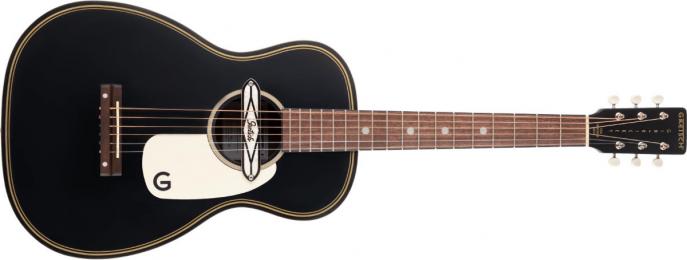
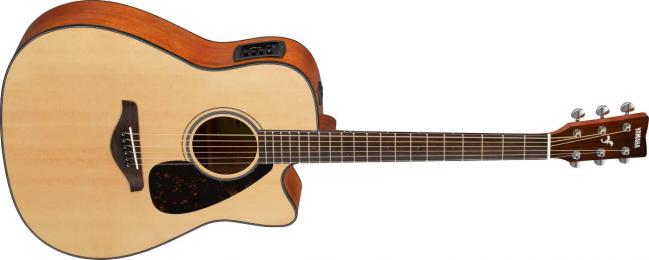
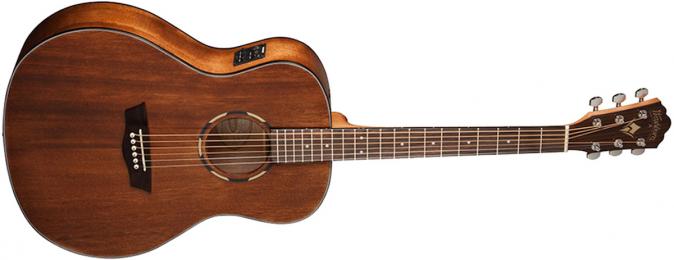
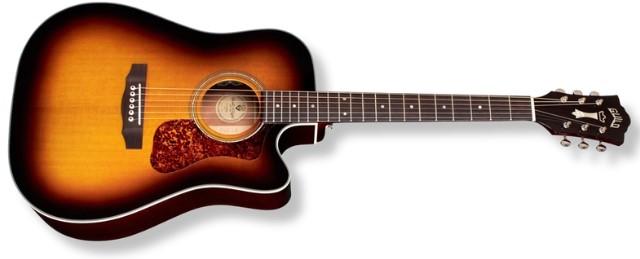
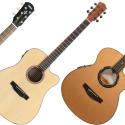
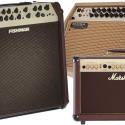
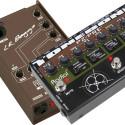
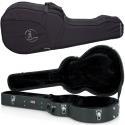
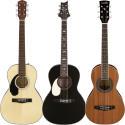
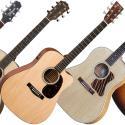
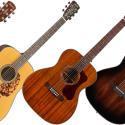
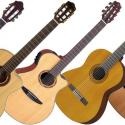
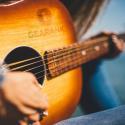

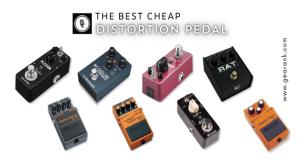

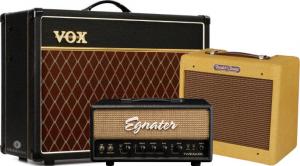
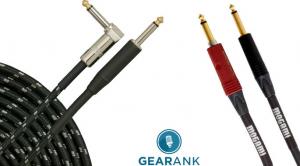
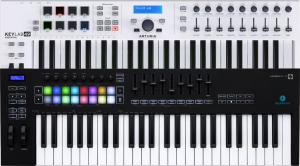
Comments
The following guitars came
Submitted by Jason Horton on
The following guitars came off our recommended list above when we published the August 2022 Edition:
The publication of our April
Submitted by Jason Horton on
The publication of our April 2021 edition resulted in the following guitars being removed from the recommended list above, but you can still see our analysis of them:
Today we removed the
Submitted by Jason Horton on
Today we removed the following guitars due to a lack of availability:
What are the best acoustic
Submitted by Eddie (not verified) on
What are the best acoustic-electric guitars for left handed For the price?
Hello Eddie,
Submitted by Alexander Briones on
Hello Eddie,
As of now, we don't have enough data regarding left-handed acoustic-electric guitars to give you specific recommendations. But generally speaking, you can look into the left-handed guitar options offered by the brands featured in this guide, they should have similar qualities as their right-handed counterpart.
Note that symmetrical non-cutaway body acoustic-electric guitars can be flipped over for use by left-handed players. But modifications on the nut and saddle may be required to accommodate the reverse orientation of all the strings.
As a result of our April 2020
Submitted by Jason Horton on
As a result of our April 2020 update, the following came off the recommended list above:
As a result of the August
Submitted by Jason Horton on
As a result of the August 2018 update to this guide, the following guitars came off the recommended list above: